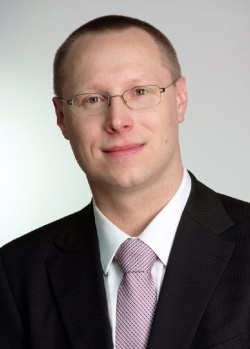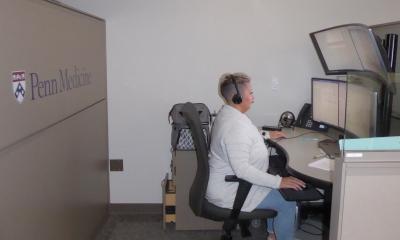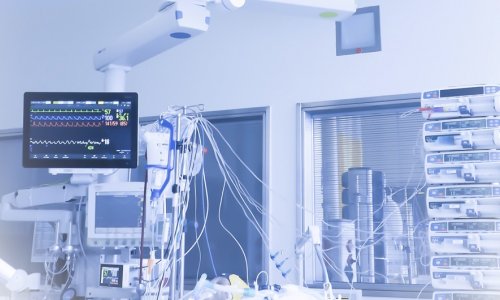Still a challenge
Perioperative anaesthesia for patients with heart failure
Can an anaesthetist treat a patient with heart failure (HF) without any specialist knowledge of cardiology? That was the question posed by Dr Florian Weis, from the Clinic of Anaesthesiology at the University Hospital of the Ludwig Maximilian University Munich, when lecturing on perioperative management of this patient group.


Speaking in Berlin, at the Capital City Conference of the Congress of Anaesthesiology and Intensive Care Medicine HAI 2012 in Berlin, his answer was ‘Yes.’ However, the treatment of patients with heart failure continues to pose a big challenge and there is much to consider, he pointed out.
Undoubtedly, the number of HF patients who need surgery and therefore anaesthetics will increase significantly due to demographic changes as well as recent advances in anaesthesiology and surgical procedures. The latter was confirmed by Eike Martin, Professor for Anaesthesiology and Intensive Care Medicine at the University Hospital in Heidelberg and one of the session Chairs: ‘Despite existing risk factors, we are more confident these days about operating on older patients, meaning patients in their 80s and 90s.’
High postoperative mortality
However, postoperative, 30-day mortality in HF patients who have undergone minor or major surgical interventions other than heart surgery continues to be significantly higher than non-HF patients, Dr Weis said, quoting 2011 study results, which, to many people’s surprise, also proved that mortality in the case of HF is actually clearly higher than amongst patients with coronary disease. Therefore, Dr Weis concluded, heart failure should be given more consideration than it currently receives.
Pre-operative assessment clinic
‘You will see that, in Germany, a third of all HF patients who come to you have not been receiving ideal (doses of) medication,’ he said. Especially when these patients do not take any ACE blockers or an angiotensin receptor blocker the mortality rate rises considerably. Dr Weis reinforced this statement with data from a survey carried out by Deutsches Ärzteblatt, the official journal of the German Medical Association, which showed that only 24% of general practitioners (GPs) and specialists were actually aware of and able to quote current heart failure guidelines. It also illustrated the persistent lack of knowledge of current treatment standards regarding the administration of aspirin for patients with heart failure. ‘People still don’t realise, and that also includes doctors in surgeries outside the hospital, that aspirin should not be stopped but that it should continue to be administered,’ Prof. Martin added, when it became clear that some of the congress audience were obviously not aware of this.
Diagnostic add-on: biomarkers and echocardiography
The obvious theme of the event was the need for a more generous diagnostic utilisation of echocardiograms and the diagnostic markers BNP or ProBNP as additional instruments of pre-medication diagnostics, at least for patients with cardiovascular problems. During his lecture at the event, cardiologist Prof. Markus Ferrari, from Jena University Hospital, recommended a combination of different methods in cases of uncertainty: ‘A patient will most likely state that they are able to climb five flights of stairs even if they have enlarged ventricles. Without the patient visibly suffering heart failure, in some of these cases an echocardiogram will actually establish an ejection fraction (EF) of only 30%, when the normal level is > 60%, and the cut-off for a higher risk anaesthesia is at <40%,’ he said. Together with a stress-echocardiogram, a determination of BNP or ProBNP – taken during the pre-operative assessment – could further aid the diagnosis. The levels of these hormones are raised in the case of relevant heart failure, although along with the patient’s age, obesity, liver failure and other co-morbidities can lead to a shift in definition of the normal range.
Etomidate is out
There was also news around the discussion of the administration of anaesthetics: Etomidate is out, Dr Weis urged: ‘It can, at any rate, no longer be recommended as a first-line anaesthetic.’ Etomidate administration has been controversial for some time – one of its quoted advantages being its clear haemodynamic stability and a disadvantage being the cortisol-synthesis problem. However, according to recent findings, Dr Weis said, the arguments for Etomidate administration, which largely originate from studies between 1974 and 1984, can no longer be sustained. A comparative study from 2010 could not detect any haemodynamic differences in the different classes of substance. Further studies, he said, prove that a single administration for re-intubation in itself already increases the requirement for steroids administration, and that a single dose to prepare for the administration can increase the risk of adrenal insufficiency. Although the effects on mortality are not conclusive, the authors of all the latest studies conclude that its administration should, if at all possible, be avoided.
Perioperative management
The pulmonary artery catheter (PAC) appears to be more popular again. In recent years it was only rarely used as an instrument for perioperative management and monitoring due to complications, as yet no documented evidence of its use, and for financial reasons. Dr Weis however, referred to the 2011 Mega-Study carried out by Hamilton, which describes the use of this catheter as beneficial for patients. Dr Weis ascribes the aforementioned complications to problems with handling: ‘In my view, the user problem is based on the frequently low incidence of use. If you only use the PAC once a year the PAC is and will continue to remain a device that needs to be viewed very critically; however, if in more frequent use, I think this will be possible with a very low rate of complications, for general surgery as well.’ However, the substantially more expensive PACs that offer permanent online monitoring are, with some exceptions, e.g.. lung transplants, are not necessary, he said. The level needs to be established, but whether or not it’s available every minute is not relevant, There is also no evidence that the much more expensive measurement catheters with online tools have any advantages.’
Profile:
Senior anaesthesiology consultant Dr Florian Weis studied medicine at the Ludwig Maximilian University, Munich and trained as a specialist in its anaesthesia clinic, in the university’s Grosshadern Campus. From 2006 – 2009 he worked as a consultant on its intensive care ward.
Internal medicine specialist Professor Markus Ferrari studied medicine, as well as education and sports sciences, in Göttingen. Early on, his aims fell on the human heart; he wrote his MD thesis on mobile cardio-pulmonary support systems and his habilitation on the ‘Development of a transvascular aortic valve replacement with a self-expanding stent’. In 1997 he left Göttingen University Hospital for the Internal Medicine Clinic at the Friedrich Schiller University Jena where he has served as Senior Consultant and Co-Director. In 2006 he co-founded JenaValve Technology GmbH and is its Medical advisor and a Member of the Scientific Advisory Board.
Eike Martin, Professor of Anaesthesiology and Intensive Care Medicine, and Managing Director of the Anaesthesiology Clinic at Heidelberg University Hospital, studied medicine at Mainz University, completing his specialist training and habilitation at the Institute of Anaesthesiology and Re-animation at the Ludwig Maximilian University Munich. From 1977 he was a consultant at Grosshadern University Hospital, Ludwig Maximilian University, Munich. Between 1987-1990 he was Senior Consultant at Nuremberg Hospital, then becoming Professor and Medical Director of the Heidelberg Anaesthesiology Clinic. In 1991 he joined the hospital’s Board as Deputy Medical Director and was Executive Medical Director of the University Hospital between 1993-2007.
28.01.2013










